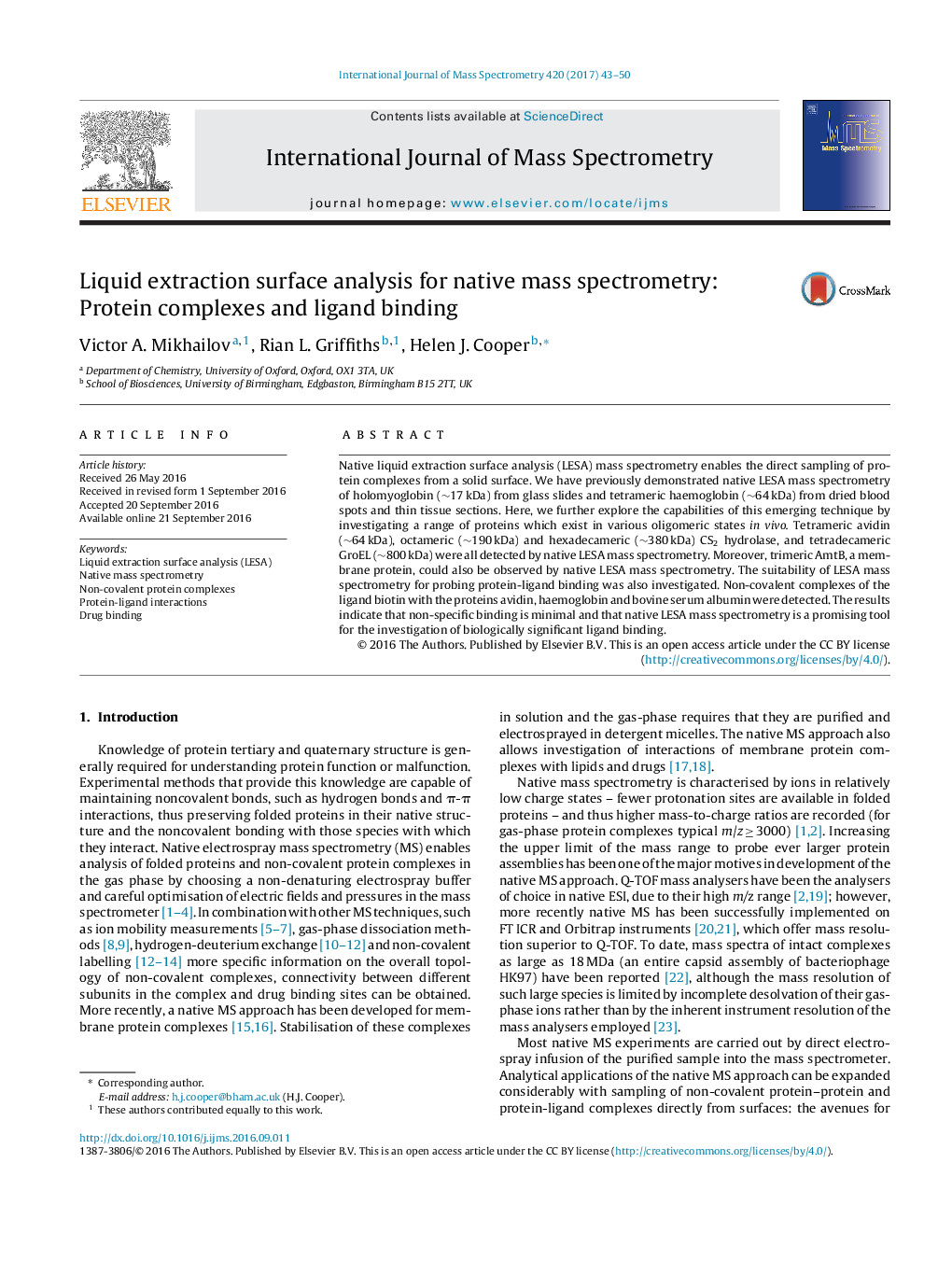| Article ID | Journal | Published Year | Pages | File Type |
|---|---|---|---|---|
| 5134194 | International Journal of Mass Spectrometry | 2017 | 8 Pages |
â¢Native LESA mass spectrometry is capable of the analysis of large (â¼800 kDa) non-covalent protein complexes.â¢Both soluble and membrane protein complexes are amenable to LESA MS.â¢Protein-ligand interactions can be interrogated by LESA mass spectrometry.
Native liquid extraction surface analysis (LESA) mass spectrometry enables the direct sampling of protein complexes from a solid surface. We have previously demonstrated native LESA mass spectrometry of holomyoglobin (â¼17Â kDa) from glass slides and tetrameric haemoglobin (â¼64Â kDa) from dried blood spots and thin tissue sections. Here, we further explore the capabilities of this emerging technique by investigating a range of proteins which exist in various oligomeric states in vivo. Tetrameric avidin (â¼64Â kDa), octameric (â¼190Â kDa) and hexadecameric (â¼380Â kDa) CS2 hydrolase, and tetradecameric GroEL (â¼800Â kDa) were all detected by native LESA mass spectrometry. Moreover, trimeric AmtB, a membrane protein, could also be observed by native LESA mass spectrometry. The suitability of LESA mass spectrometry for probing protein-ligand binding was also investigated. Non-covalent complexes of the ligand biotin with the proteins avidin, haemoglobin and bovine serum albumin were detected. The results indicate that non-specific binding is minimal and that native LESA mass spectrometry is a promising tool for the investigation of biologically significant ligand binding.
Graphical abstractDownload high-res image (146KB)Download full-size image
